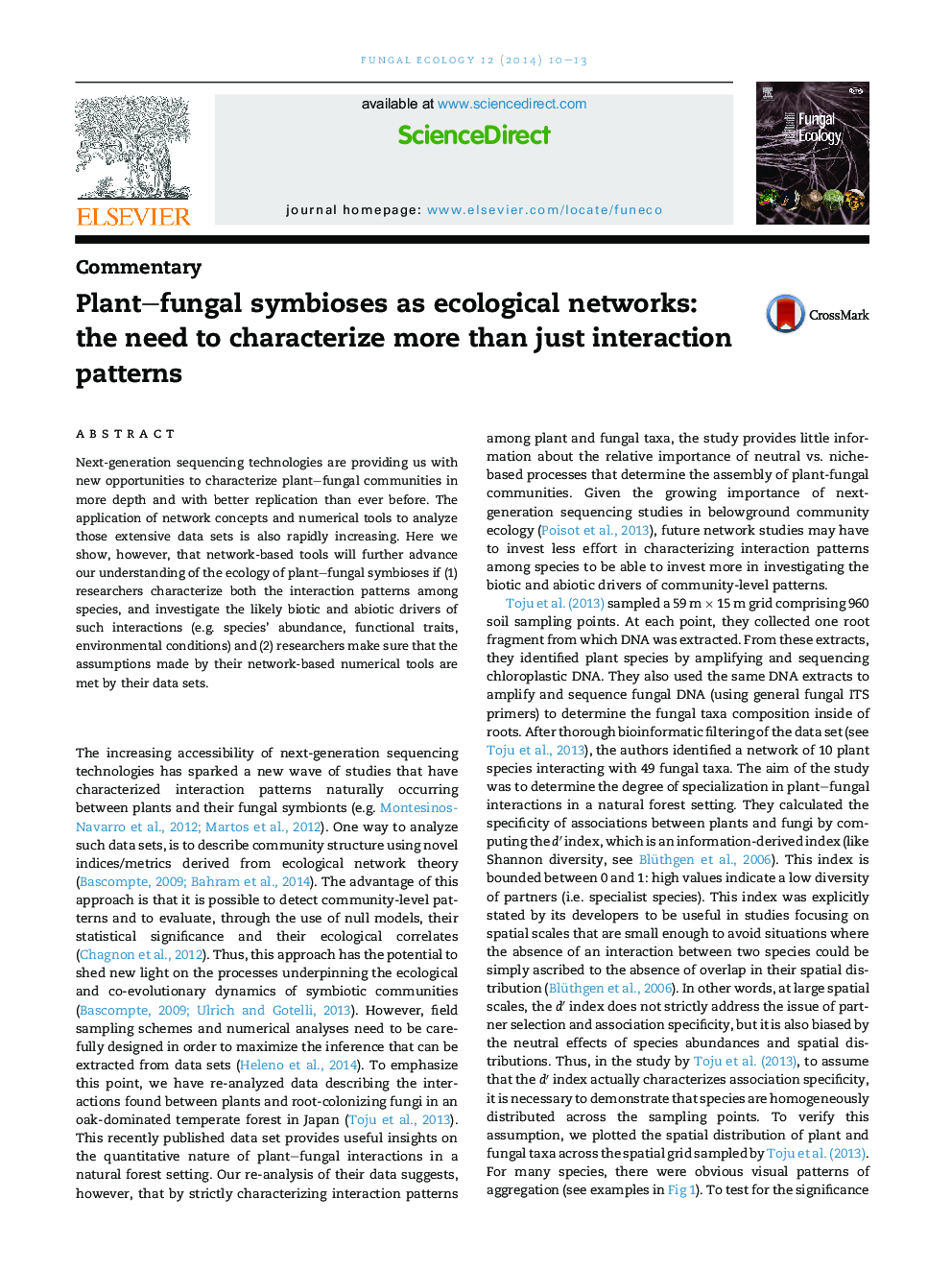| کد مقاله | کد نشریه | سال انتشار | مقاله انگلیسی | نسخه تمام متن |
|---|---|---|---|---|
| 2053935 | 1543652 | 2014 | 4 صفحه PDF | دانلود رایگان |
• Network-based tools are increasingly used to study plant–fungal symbioses.
• Such an approach can provide little information if used improperly.
• More focus should be placed on biological drivers of interactions.
• Attention should be paid to the assumptions of network-based numerical tools.
Next-generation sequencing technologies are providing us with new opportunities to characterize plant–fungal communities in more depth and with better replication than ever before. The application of network concepts and numerical tools to analyze those extensive data sets is also rapidly increasing. Here we show, however, that network-based tools will further advance our understanding of the ecology of plant–fungal symbioses if (1) researchers characterize both the interaction patterns among species, and investigate the likely biotic and abiotic drivers of such interactions (e.g. species' abundance, functional traits, environmental conditions) and (2) researchers make sure that the assumptions made by their network-based numerical tools are met by their data sets.
Journal: Fungal Ecology - Volume 12, December 2014, Pages 10–13
